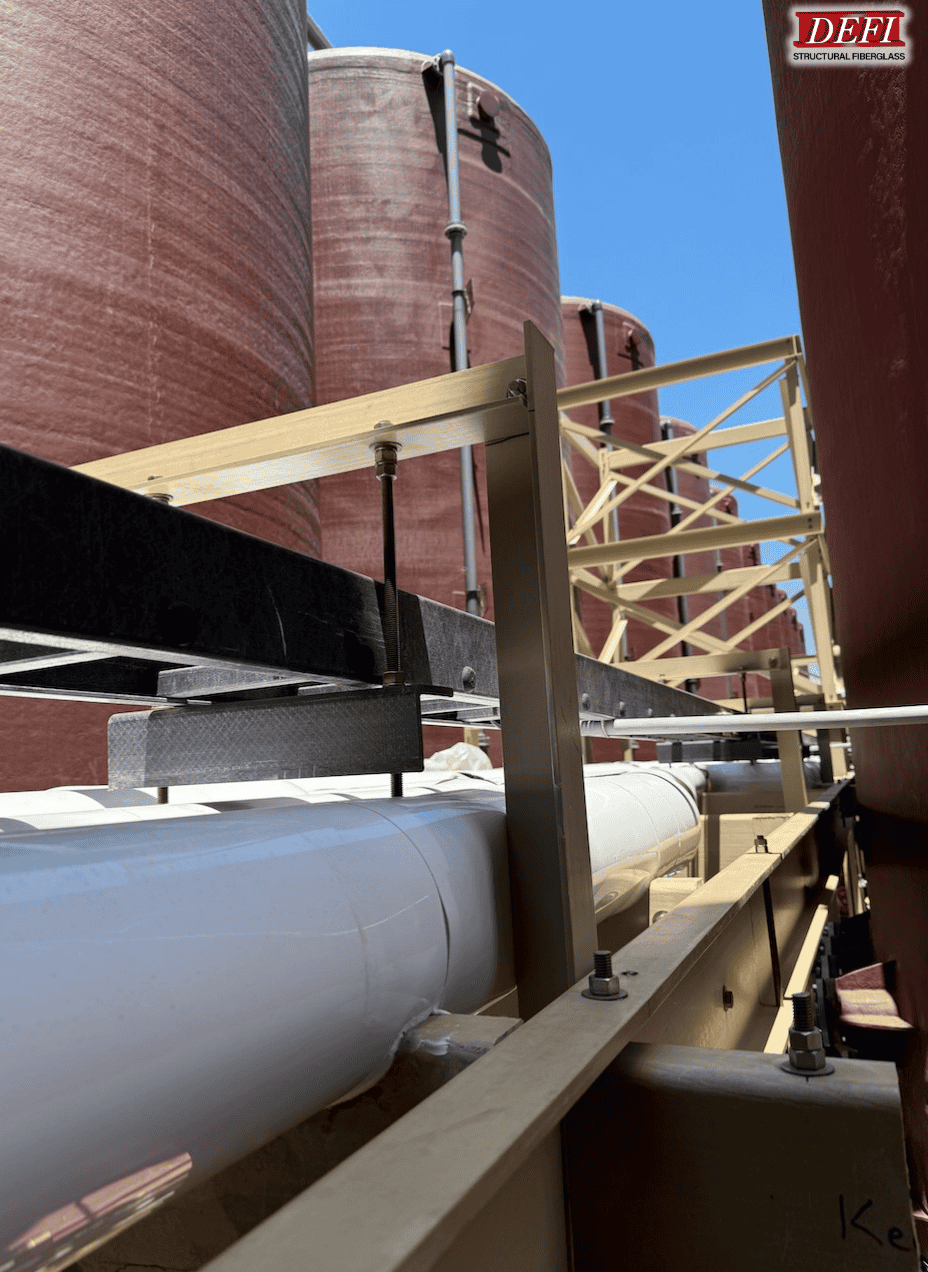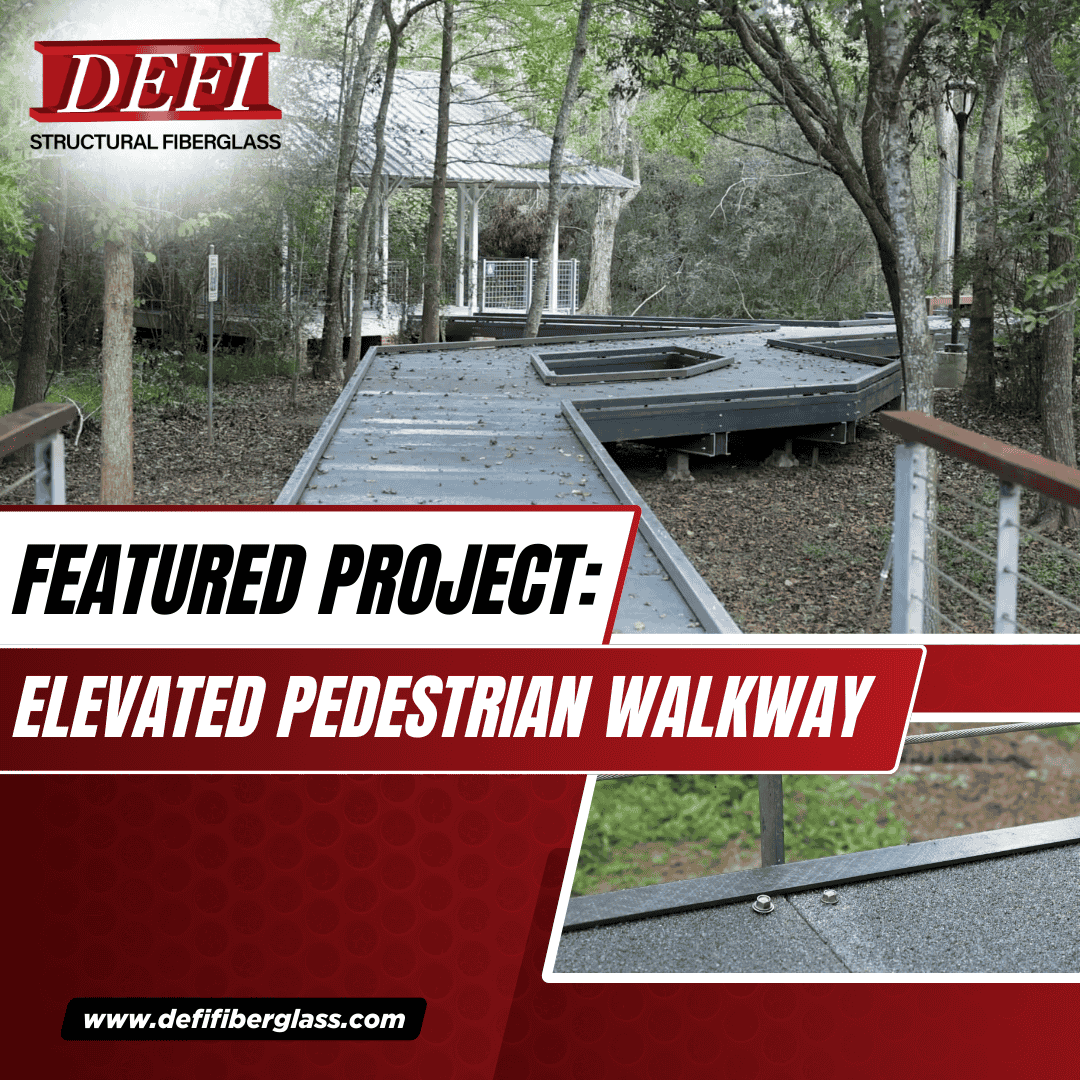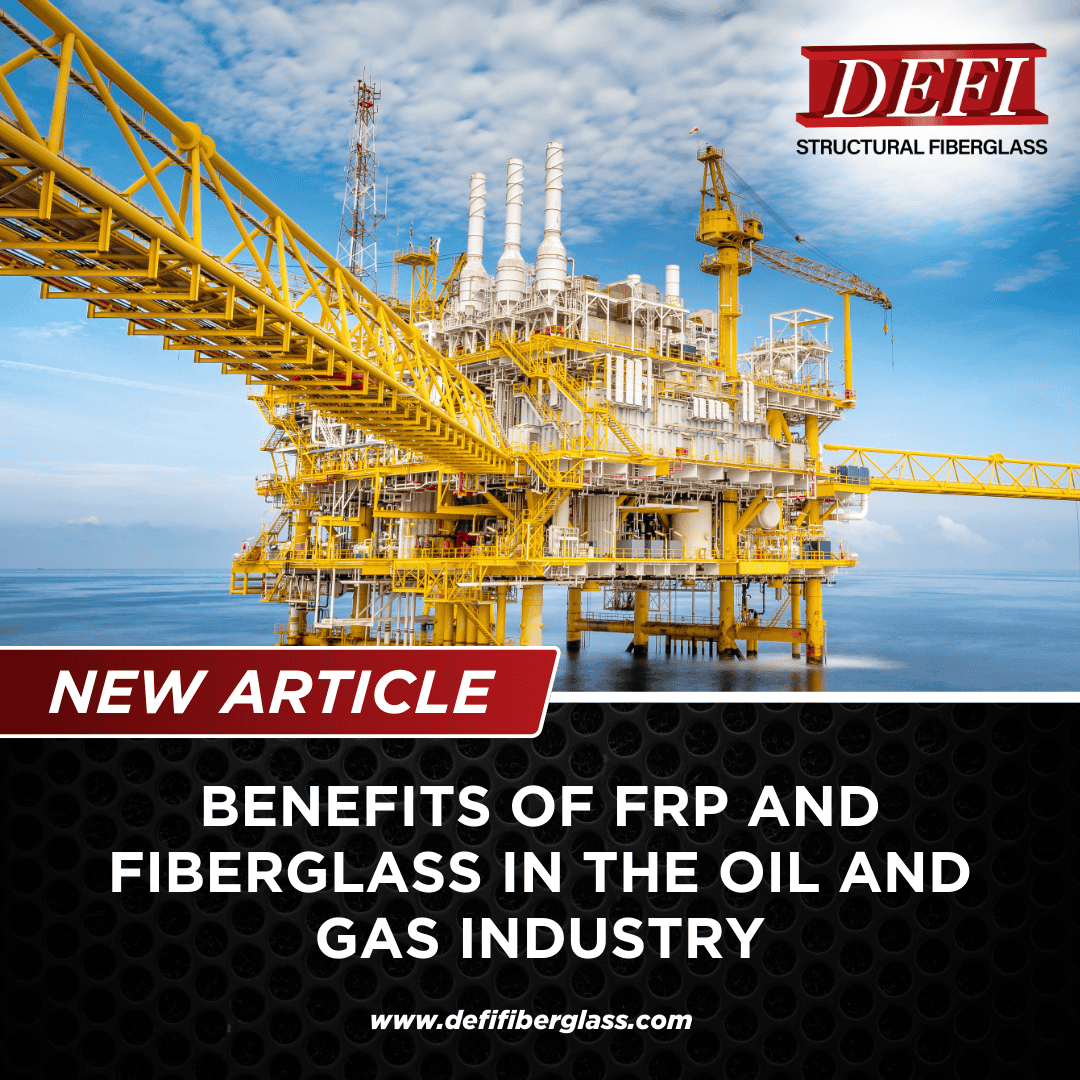A: At DEFI structural fiberglass, we use three methods of fiberglass—pultrusion, open-molded, and hand layup. Pultrusion is something you would typically see in a fiberglass channel, beam, or even square tube that we use in handrails and ladders.
Open molded typically refers to the fiberglass grating—open molded grating.
The hand layup is when we would use a hand layup mold to make a special product or shape.
If you found us by searching Google for “fiberglass reinforced plastic,” you probably got a lot of extra results you didn’t expect. You might have seen several different terms that include fiberglass and the abbreviated form, “FRP.”
It can be quite confusing, especially when you learn that not all fibers in FRP are—glass. That’s right, FRP is a broad term for any plastic that is reinforced with some type of fibers. In the US you hear FRP the most and it refers to what we specialize in—specifically structural fiberglass. To know what structural FRP is though, you need to know what’s at its core—fiberglass.
What Is Fiberglass?
Fiberglass is created by spinning melted glass in such a way that it creates fiber strands of glass. It almost looks like the consistency of cotton candy. In and of itself these fibers can be a usable product, but more often than not, fiberglass is used in a composite like FRP.
A composite is a combination of materials that when combined, creates a new substrate. The composite is often comprised of a matrix or base material and reinforcement material. The matrix can be metal, plastic, or even ceramic. Fiberglass, in this case, is the reinforcement material that makes the composite stronger than the parts on their own.
What Is FRP?
FRP is an abbreviation for fiber-reinforced plastic or polymer in some circles. Not to get too scientific, a polymer is a chemical compound with a long chain-like structure of molecules. Some polymers are natural like rubber, others are synthetic such as polypropylene. Pliable synthetic polymers such as polypropylene are called thermoplastics while more rigid ones such as polystyrene are called thermosets. That FRP is the raw material that is manipulated to form the various profiles we create for structural building, hence it’s called—structural fiberglass.
What Is Structural Fiberglass?
Structural Fiberglass are building components manufactured using standard fiberglass profiles such as angles, tubes, I-beams, and other shapes.
Most of our products are made using three different fabrication methods depending on the end-use. As Arthur mentioned in the video, we use pultrusion, open mold process, and hand layup.
Each process has its unique applications. Most of our top-selling FRP products from DEFI are fabricated using the pultrusion method. Due to the nature of the pultrusion process, this method gives several advantages over other methods such as increased strength, higher corrosion resistance, and better impact resistance.
What Is Pultrusion?
Pultrusion is a technique for creating continuous structural fiberglass shapes but without distorting the cross-sections. This process involves pulling the three laminates mentioned before through a heated die that forms it to specs. The fiberglass reinforcement material is usually in continuous form—hollow spools, roving, or filament mats.
The resin liquid mix that is used to bind the fibers is cured within a catalytic reaction that is caused by the heat from the die. The resin then becomes rigid and takes on the shape of the die’s cavity.
The pultrusion process is used in a wide range of industries for many different applications. This is because they can duplicate the strong properties of traditional materials while correcting the weak properties.
For example, pultruded structural fiberglass grating duplicates the strength of steel grating but is corrosion-resistant, unlike steel. While there are several variations of the pultrusion method such as reciprocating pullers or caterpillar pullers—the concept is the same.
Hand Layup & Open Mold Process
Open molding is one of the oldest processes for creating FRP products. There are no technical skills or complex machines needed. It’s ideal for low-volume, labor-intensive, larger products such as vessels, tanks, car bodies, and oil pipelines.
The mold contains the structural shape that is needed therefore careful order of steps must be taken. For example, to have the final product shiny or have texture, the surface finish of the mold needs to reflect that specification.
If the external surface of the product needs to be smooth, you use a female mold to fabricate the product. In the same manner, if the inside specification is smooth, then you pour on the male mold. Either way, molds must be pristine or the finished product will reflect any defects in the mold itself.
Unlike pultrusion, since the resin is viscous and is being poured into the mold, it needs to have a releasing agent. Without a releasing agent, the product may not come free from the mold, rendering it unusable. Using a thin coating of wax, polyvinyl alcohol, or mylar film allows for a smooth release of the finished product after curing.
Hand layup is an open mold process and as the name suggests, this process is all done by hand. The quality is heavily dependent on the skill of the person crafting it. A good example of hand layup process products are safety helmets and custom shapes.
The Advantages of Pultruded Structural Fiberglass
There’s a reason that our number one seller is pultruded fiberglass products. The combination of the raw materials used and the pultrusion process give structural FRP benefits steel just can’t match:
- Extreme corrosion resistance
- Superior Strength to Weight Ratio
- Non-Slip attributes can be baked right in
- Non-Conductive
- Easy installation with basic tools
- Extreme heat resistance
In addition to those benefits, there are inherent advantages that can’t be duplicated with any other material other than fiberglass.
Durability
There are quite a few applications in manufacturing plants that have chemical corrosives or are exposed to harsh outdoor environments. Structures constructed from FRP easily withstand the day-to-day abuse of these environments with no damage. Steel, on the other hand, can rust, flake, and in some neglected situations—break, causing serious injury. You never have to worry about FRP’s structural integrity being compromised in these environments.
Long Term Value
Another reason why using structural FRP is such an advantage for many applications comes down to pure economics. The manufacturing process of pultrusion produces the highest output volume at the lowest conversion cost.
FRP is much lighter, cheaper to ship, and requires no maintenance. Of course, the installation of steel often needs cranes and special heavy lifting equipment. FRP can be moved with a forklift or even carried by hand.
Safety
The safety of steel can be compromised by so many different hazards. Electrical, corrosives, the elements. Safety is crucial in both the workplace infrastructure and public-use structures. At DEFI we produce FRP handrails in various designs that exceed OSHA requirements.
Special resin combinations can be used to offer traits such as heat and fire resistance in our vinyl ester and polyester handrails. We can also “bake in” any color including safety yellow and even UV barrier coatings for world-class UV resistance.
If You Can Design It—DEFI Can Make It
Our fiberglass products are as customized or as universal as your application requires. We have common profiles and structures in stock and also a full custom shop for your unique projects.
Contact us today and let’s build it better together.



